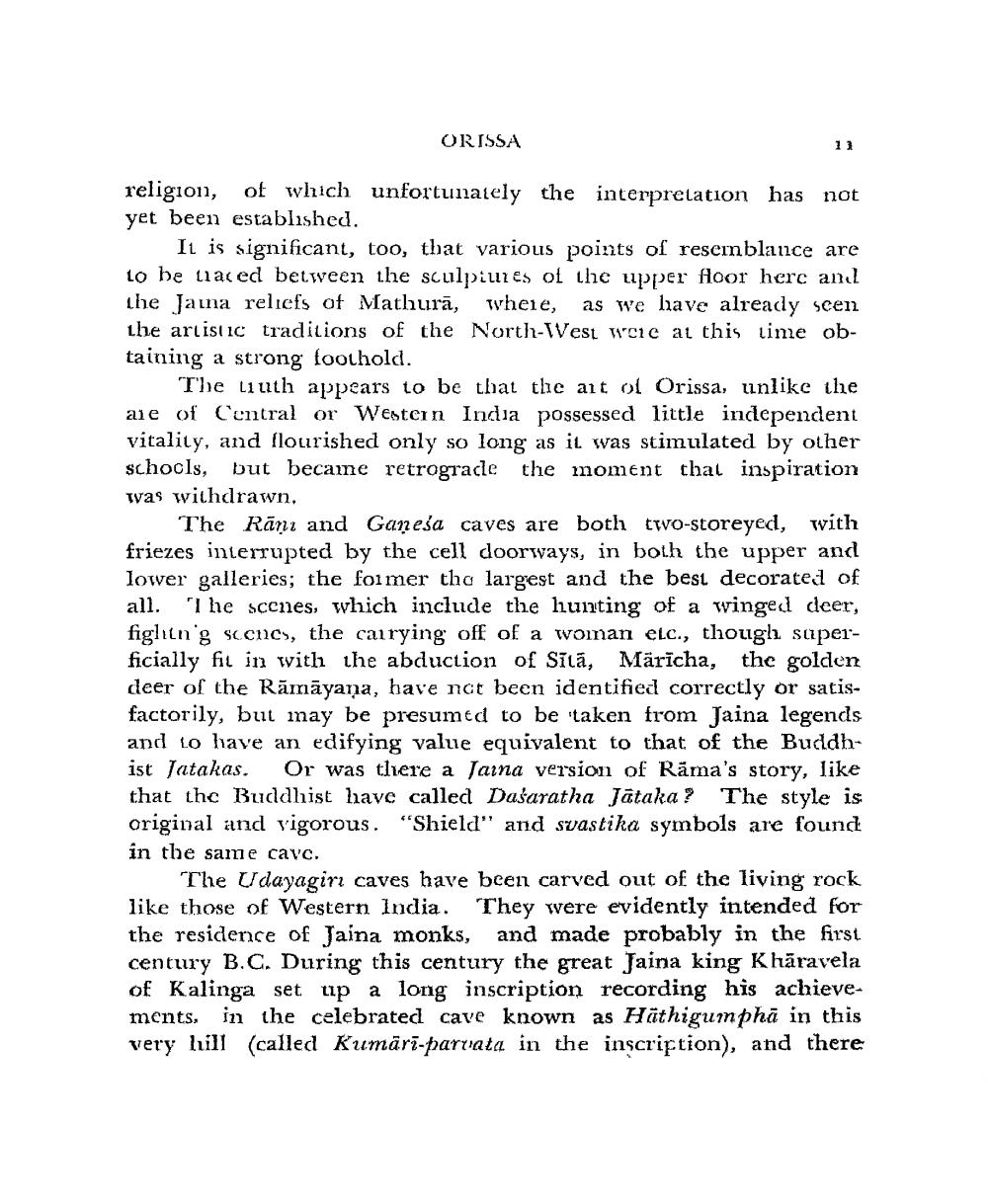________________
ORISSA
11
religion, of which unfortunately the interpretation has not yet been established.
It is significant, too, that various points of resemblance are to be traced between the sculptures of the upper floor here and the Jaina reliefs of Mathura, where, as we have already scen the artistic traditions of the North-West were at this time obtaining a strong foothold.
The uuth appears to be that the art of Orissa, unlike the ale of Central or Western India possessed little independent vitality, and flourished only so long as it was stimulated by other schools, but became retrograde the moment that inspiration was withdrawn.
The Rani and Ganesa caves are both two-storeyed, with friezes interrupted by the cell doorways, in both the upper and lower galleries; the former the largest and the best decorated of all. 'I he scenes, which include the hunting of a winged deer, fightn'g scenes, the carrying off of a woman etc., though superficially fit in with the abduction of Sītā, Maricha, the golden deer of the Rāmāyaṇa, have not been identified correctly or satisfactorily, but may be presumed to be taken from Jaina legends and to have an edifying value equivalent to that of the Buddh ist Jatakas. Or was there a Jama version of Rama's story, like that the Buddhist have called Dasaratha Jataka? The style is original and vigorous. "Shield" and svastika symbols are found in the same cave.
The Udayagiri caves have been carved out of the living rock like those of Western India. They were evidently intended for the residence of Jaina monks, and made probably in the first century B.C. During this century the great Jaina king Khāravela of Kalinga set up a long inscription recording his achievements, in the celebrated cave known as Häthigumphā in this very hill (called Kumārī-parvata in the inscription), and there




